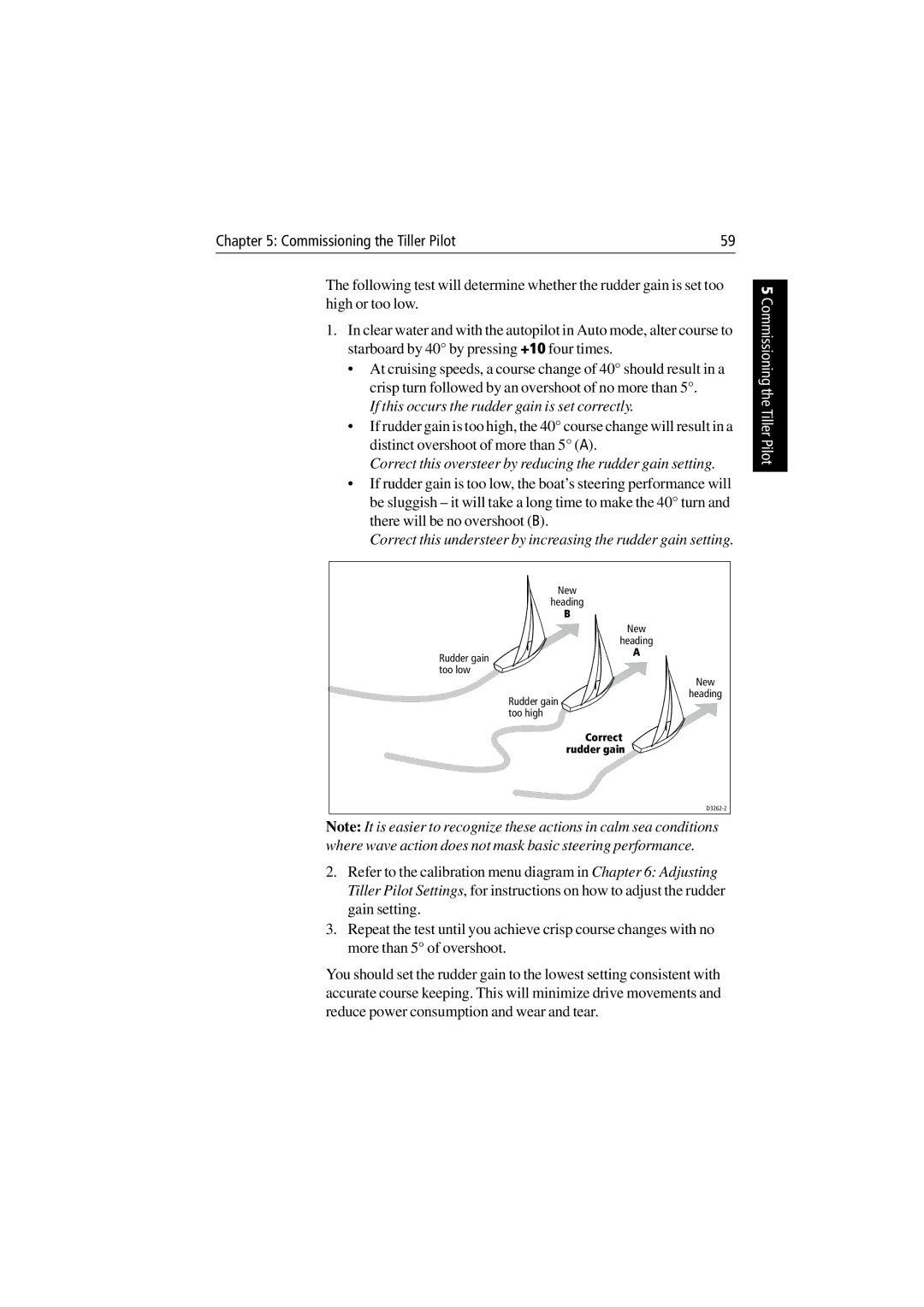
Chapter 5: Commissioning the Tiller Pilot | 59 |
The following test will determine whether the rudder gain is set too high or too low.
1.In clear water and with the autopilot in Auto mode, alter course to starboard by 40° by pressing +10 four times.
•At cruising speeds, a course change of 40° should result in a crisp turn followed by an overshoot of no more than 5°.
If this occurs the rudder gain is set correctly.
•If rudder gain is too high, the 40° course change will result in a distinct overshoot of more than 5° (A).
Correct this oversteer by reducing the rudder gain setting.
•If rudder gain is too low, the boat’s steering performance will be sluggish – it will take a long time to make the 40° turn and there will be no overshoot (B).
Correct this understeer by increasing the rudder gain setting.
New
heading
B
New
heading
5 Commissioning the Tiller Pilot
Rudder gain too low
A
New
Rudder gain too high
heading
Correct rudder gain
Note: It is easier to recognize these actions in calm sea conditions where wave action does not mask basic steering performance.
2.Refer to the calibration menu diagram in Chapter 6: Adjusting Tiller Pilot Settings, for instructions on how to adjust the rudder gain setting.
3.Repeat the test until you achieve crisp course changes with no more than 5° of overshoot.
You should set the rudder gain to the lowest setting consistent with accurate course keeping. This will minimize drive movements and reduce power consumption and wear and tear.
